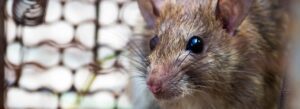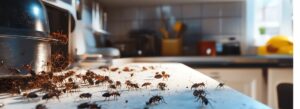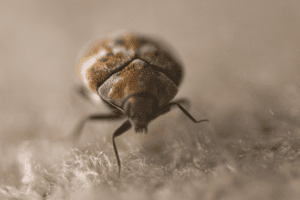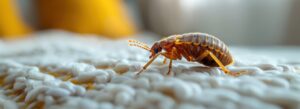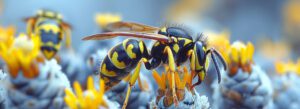Understanding the Risks for Homes and Businesses in Kent
Flying ants — they swarm out of nowhere, crawl over patios and windows, and sometimes appear indoors in unnerving numbers. But are they just an annual nuisance, or is there real harm in letting them stick around?
If you’re based in Ashford, Maidstone, Canterbury, or anywhere in Kent, this article breaks down the facts — from bites and property damage to long-term risks and why it’s worth keeping an eye on more than just the buzz.
Flying Ants: What Are They Really?
Flying ants are the reproductive phase of common ant species, such as the black garden ant (Lasius niger) and carpenter ants. These insects grow wings to take part in a nuptial flight, a key part of their reproduction cycle.
During this flight, queen ants mate with male drones mid-air. After successful mating, the queens lose their wings, burrow into soil, plant beds, or decaying wood, and begin laying eggs — founding new ant colonies.
This might sound like a natural wonder — and it is — but when flying ants enter homes or businesses, nature quickly turns into nuisance.
Do Flying Ants Bite or Sting?
In Kent, most flying ants are harmless to humans. However:
- Carpenter ants and red ants (Myrmica rubra) can bite if disturbed
- Bites are usually mild but can cause irritation in sensitive individuals
- Unlike a wasp or termite, flying ants don’t sting or chew through buildings
For the average person, flying ants won’t cause physical harm. But that doesn’t mean they’re risk-free.
When Do They Become a Problem?
Flying ants become harmful when they:
- Invade indoor spaces like kitchens, bedrooms, or roof spaces
- Set up colonies inside walls, insulation, or timber structures
- Reappear year after year, signalling a growing internal nest
- Attract other pests like silverfish, mosquitoes, or even wasps
In homes, this often begins unnoticed. A queen ant may nest in a damp timber beam or behind a skirting board, laying thousands of eggs. Before long, a once-a-year flying ant problem turns into a full-time pest control issue.
The Lifecycle Behind the Problem
To understand why flying ants can become harmful, it helps to understand how an ant colony works. After mating during the nuptial flight, the queen ant starts her own colony by burrowing into soil or even the cracks in garden paving, wooden fence posts, or cavity walls. She’ll lay hundreds to thousands of eggs over her lifetime.
These eggs grow into:
- Worker ants: females that gather food, maintain the nest, and protect the colony
- Drones: males that exist only to mate during future flights
- New queens, when the colony is mature
This level of reproduction means what seems like a minor issue can snowball into a widespread infestation — especially in warm, damp areas like Kent gardens, lofts, or floor voids.
Can Flying Ants Cause Property Damage?
Yes — especially carpenter ants and other wood-nesting species. While they don’t eat wood like a termite, they excavate tunnels through:
- Soft timber frames
- Window sills
- Loft beams
- Decking or shed panels
Over time, this damages structural integrity and creates hidden costs.
Older homes in towns like Canterbury or Whitstable — where timber beams, attics, and period features are common — are particularly vulnerable.
Are They a Health Risk?
Flying ants don’t spread diseases like cockroaches. But they can:
- Contaminate surfaces by crawling over food or utensils
- Introduce bacteria via contact with decomposing matter or outdoor waste
- Trigger allergies or mild respiratory symptoms in vulnerable individuals
Their presence in sensitive areas — like kitchens or healthcare facilities — should be taken seriously. Businesses across Kent, especially in food, hospitality, and education sectors, are increasingly proactive in preventing such risks.
What Makes Them Swarm?
Swarming is triggered by a specific combination of environmental cues:
- Humidity following rain
- Still wind speeds
- Temperature rising above 20°C
This is especially common in Kent during July and August. The region’s varied climate, mix of rural and urban land, and urban heat island effect in places like Ashford or Canterbury make it ideal for synchronised nuptial flights.
The scale is often so large, it’s visible on weather radar. Even Rentokil Initial has cited these events in nationwide alerts — though our local team at Innovation Pest Control can respond faster and more affordably.
What About Wildlife and Pets?
Flying ants play a small but important role in the ecosystem:
- They’re food for birds and small animals
- Help aerate soil
- Break down organic matter
However, inside your home, they’re not welcome. Curious pets may eat them — usually harmlessly — but large quantities can cause vomiting or digestive irritation.
Flying ants can also attract predatory insects or scavengers like wasps, increasing the likelihood of a broader pest issue.
For humans, their sudden presence can cause stress, especially for children, elderly people, or anyone with phobias.
Can You Remove Flying Ants Yourself?
For small, outdoor swarms, yes. Try:
- Vacuuming flying ants quickly (dispose of the bag outside immediately)
- Spraying natural deterrents like peppermint or essential oil blends (e.g. eucalyptus or tea tree)
- Wiping down entry points with soap and water to disrupt pheromone trails
But DIY efforts won’t eliminate the queen or root ant colony. For indoor swarms, repeat infestations, or property damage, you’ll need professional help.
The Cost of Ignoring the Signs
Letting a flying ant problem persist doesn’t just invite more ants — it increases the risk of deeper structural issues, broader pest infestations, and added expense. We’ve seen homes in Ashford and Maidstone where unnoticed colonies led to:
- Timber replacement in lofts
- Rewiring due to damaged insulation
- Internal wall repairs where ants tunneled through gypsum board
The longer ants are left undisturbed, the more their network grows. Colonies can persist for years if left untreated.
How Innovation Pest Control Helps
We’re based in Kent and have years of experience treating flying ant infestations across:
- Ashford
- Maidstone
- Canterbury
- Folkestone
We locate hidden nests and provide:
- Fast, discreet treatment
- Non-toxic options safe for pets, plants, and families
- Advice to prevent repeat outbreaks
We never overuse harsh pesticides — we treat precisely, effectively, and with care.
📞 Call 07743 958655 📧 Or email us today to book your inspection
Final Word: Are Flying Ants Harmful?
Flying ants might not seem dangerous, but they can:
- Damage property like a termite or carpenter ant
- Contaminate surfaces and food
- Disturb sleep and wellbeing
- Signal deeper, hidden infestations
Kent’s changing climate and mixed landscapes mean that what used to be a summer nuisance is now a growing concern for homeowners and businesses.
📞 Call Innovation Pest Control on 07743 958655 — and let’s solve the problem before the next swarm arrives.


